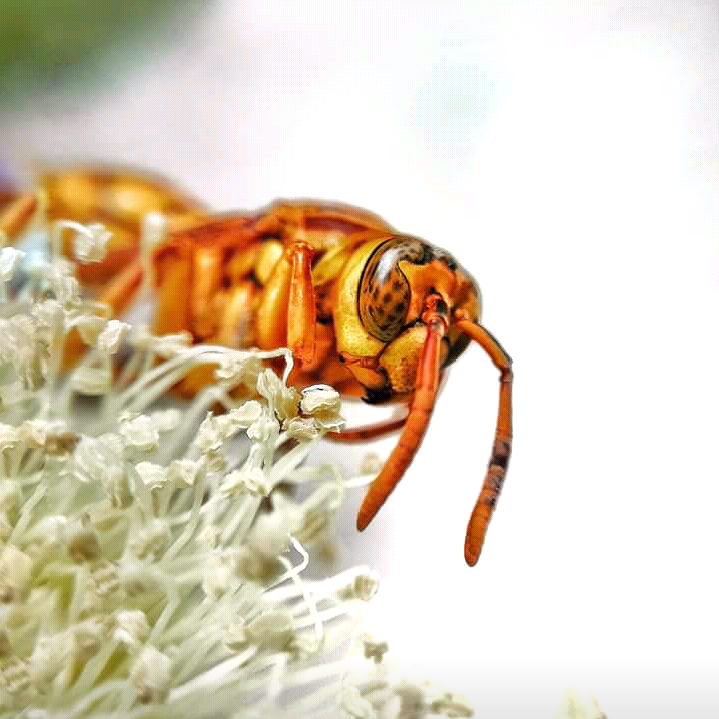
Honey bees collect pollen and nectar as food for the entire colony, and as they do, they pollinate plants. Nectar stored within their stomachs is passed from one worker to the next until the water within it diminishes. At this point, the nectar becomes honey, which workers store in the cells of the honeycomb.
Although the main diet of honey bees is comprised of honey and pollen, they collect other liquids and juices from plant and fruit exudates as well. If they encounter insects that secrete honeydew, honey bees collect these liquids and store them as honey. However, when there is no pollen, nectar or honeydew available, honey bees may also collect and store plant spores and dusty animal feed as they would nectar or pollen.
Honey bees have a wide range of nutritional requirements, including vitamins, minerals, lipids, proteins and carbohydrates. Honey bees need these nutrients for taking care of their young, the development of young workers and the overall survival of a the colony.
Queens, males, workers and larvae require vitamin B complex and vitamin C for proper growth and development. Honey bees also collect proteins from plant pollen, which they bring back to their nest. Male honey bees obtain protein from the secretions of young workers combined with honey or pollen. Queens and honey bee larvae collect their protein requirements from royal jelly secreted by those same young workers.
As young honey bees mature, their need for protein decreases and they depend upon carbohydrates and sugar, or lipids, for the majority of their diet. Honey and nectar collected by bees contains both sugar and carbohydrates, which produce energy. This energy is converted to body fat and is stored for future use during cold weather.
Honey bees obtain necessary vitamins from royal jelly, pollen and various microorganisms within the hive. If worker bees collect and store significant amounts of pollen, a colony has no need to seek out alternate protein sources.
Honey bees collect pollen and nectar as food for the entire colony, and as they do, they pollinate plants. Nectar stored within their stomachs is passed from one worker to the next until the water within it diminishes. At this point, the nectar becomes honey, which workers store in the cells of the honeycomb. Although the main diet of honey bees is comprised of honey and pollen, they collect other liquids and juices from plant and fruit exudates as well. If they encounter insects that secrete honeydew, honey bees collect these liquids and store them as honey. However, when there is no pollen, nectar or honeydew available, honey bees may also collect and store plant spores and dusty animal feed as they would nectar or pollen. Honey bees have a wide range of nutritional requirements, including vitamins, minerals, lipids, proteins and carbohydrates. Honey bees need these nutrients for taking care of their young, the development of young workers and the overall survival of a the colony. Queens, males, workers and larvae require vitamin B complex and vitamin C for proper growth and development. Honey bees also collect proteins from plant pollen, which they bring back to their nest. Male honey bees obtain protein from the secretions of young workers combined with honey or pollen. Queens and honey bee larvae collect their protein requirements from royal jelly secreted by those same young workers. As young honey bees mature, their need for protein decreases and they depend upon carbohydrates and sugar, or lipids, for the majority of their diet. Honey and nectar collected by bees contains both sugar and carbohydrates, which produce energy. This energy is converted to body fat and is stored for future use during cold weather. Honey bees obtain necessary vitamins from royal jelly, pollen and various microorganisms within the hive. If worker bees collect and store significant amounts of pollen, a colony has no need to seek out alternate protein sources.
Hi! I am a robot. I just upvoted you! I found similar content that readers might be interested in:
https://www.orkin.com/stinging-pests/bees/what-do-honey-bees-collect/
Thnnx need any help ?